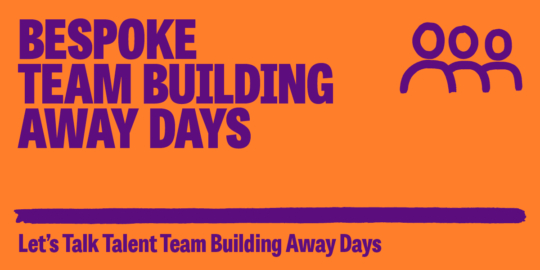How job crafting can help employees take charge of their careers and create new meaning at work
What do you think motivates people to get up in the morning and go to work? There are a few answers to this question. At Let’s Talk Talent (LTT), we believe there are several key internal drivers, whether it’s the feeling of belonging to a community of peers, the idea of working for a higher purpose or the opportunity to develop their career. Job crafting taps into purpose, and gives individuals the opportunity to identify their own personal drivers, and tweak their role in a way that makes it more fulfilling for them. Intrigued? Here’s how it works.
Engagement and motivation as key profit generators
Having an engaged workforce matters, and it is essential for businesses to survive and thrive. Not only does it generate higher profits (business units with engaged workers have seen a 23% increase in profit, it is also a necessary precursor to innovation. Many businesses are currently struggling to generate engagement and to increase motivation, two metrics which are at an all-time low on a global scale. So, what can be done?
The concept of job crafting, which has been around for several years, is currently picking up steam and at LTT, we can understand why. This trend is something that perfectly fits our 70/20/10 career development model. After all, if staff should be accountable for creating their own career path, shouldn’t they be given the autonomy they need to choose how to best do their jobs right now?
What is job crafting?
Traditionally, creating a job description has been a top-down process, with managers and HR professionals tailoring a role to the specific needs of the organisation. While this is a necessary process, it can be hard for candidates to find motivation on a daily basis when tasks have already been set and decided for them. Businesses worldwide are being faced with extremely low engagement levels, and phenomena such as the Great Resignation and Quiet Quitting have really brought this reality home. Research undertaken by Gallup shows that just 10% of UK workers reported feeling involved in and enthused by their work, while globally this figure barely rises above 23%. And believe it or not, Quiet Quitters make up 6 in 10 employees. That is to say that 60% of employees are just showing up and have given up on the idea of going above and beyond their job description.
At LTT, we know that finding purpose at work is a key motivation driver. We also know that motivation is deeply personal, and that what works for one person may not work for the next. Job crafting is an employee-led, personalised approach and can bring out the best in people as staff are free to explore what brings them joy at work. Does this mean businesses should just let employees freely decide what they do and do not do? Is job crafting just about letting staff take on whatever brings them joy and forget about the boring stuff they don’t fancy doing?
“Not at all,” says Martina Doherty, Associate at Let’s Talk Talent. “Job crafting allows you to tap into what you are good at, and to use your strengths to bring value to your organisation. Employees still have the same performance objectives and commitment to do the job they were hired to do. But they are granted the autonomy to choose how they want to do their job, within the boundaries of the role, of course.”
How job crafting works
The concept is fairly simple. Founders Jane E. Dutton and Amy Wrzesniewski have described it as: “Utilising opportunities to customise (your job) by proactively changing (your) tasks and interactions with others at work.”
What does this look like in practice? Job crafting can take several forms, and there are currently four ways an individual can redesign their role to fit them better.
Task crafting
This is about tangibly changing elements of the job and how it is done. Employees will need to make a list of all daily tasks and determine if some can be dropped, modified or added without affecting what they have been hired to do. For example, a member of the marketing team may take it upon themselves to inform the rest of the company of the latest marketing campaign, and create an internal newsletter for that purpose.
Relational crafting
This component of job crafting is about changing relationships at work and seeking new ones to increase their productivity. Liaising with a different department, for example, may open up a new perspective for a member of staff and allow them to spot issues before they arise.
Skill crafting
At LTT, we call this career development, but all in all, the objective is the same. This process aims to help staff identify, develop and utilise new skills that will help them do their job in a more efficient way. Again, it’s important for this to be employee-led so people can pick the training that is most relevant to them, rather than being limited to the training traditionally attached to a particular role.
Cognitive crafting
Cognitive crafting is about reframing how we might think about work, the value we attach to it and the significance it brings. Employees need to understand how they are contributing to the vision and mission of the organisation in a significant way, and this could require changing the way they see their work.
How HR can help implement job crafting
While job crafting is employee-led by nature, it does need to be encouraged and supported by the organisation in order to generate results. Businesses should be willing to switch up their usual employee strategy in a number of ways. Here are Martina’s top tips:
- Don’t create job roles that are too prescriptive. Allow for some degree of personalisation.
- Foster a culture of autonomy and trust that allows for flexibility if initial attempts at job crafting need to be amended.
- Give managers the leeway to adapt their management styles to their team members.
- Clearly communicate the organisation’s vision and values, so people can find the best ways to contribute to reaching its goals.
- Provide tools to get staff thinking about how they could craft their job to their skills and drivers. Some of our favourite introspection tools include:
- STAR mapping (getting staff to identify the skills, training, attributes and relationships that will help them progress in their careers).
- Career coaching cards (useful to get staff to understand what they want to get out of their career).
- Career mapping (this exercise can help people put their finger on what has brought them joy or dissatisfaction in the past, so they can add more of what they love and less of what they hate into their current role).
- Ikigai (yes, the Japanese art of finding the sweet spot between what people love, what they’re good at and what the organisation needs).
The benefits of job crafting for organisations
The benefits of job crafting for employees are fairly self-evident, but are the results really there for organisations? Yes, they are. When given autonomy over their roles, employees have been proven to be more motivated, and therefore more productive. Research shows that adopting this approach has positive impacts on employee engagement levels, on staff wellbeing and ultimately, on overall organisational performance.
How to get started with job crafting
t may sound like job crafting is the perfect solution for any business hoping to generate high performance. However it does require a commitment to giving employees the tools they need to take charge not only of their future careers, but of their current workload too.
Before encouraging it, ask yourself:
- Are your people aware of your mission, goals and values so they can orient their workloads towards making a valuable contribution?
- Do employees have the autonomy needed to craft their own job description?
- Is there enough support in place in terms of resources or equipment to support your team’s job crafting efforts? What does this support look like?
- Do you have KPIs in place to measure deliverables and value that each role delivers?
Job crafting, like everything else, may not be for everybody. However, organisations that have embraced it are seeing great results. After all, putting your employees first and dedicating efforts to making sure they find joy at work will always remain a winning formula!
If you’d like to explore whether job crafting could work for your business, do not hesitate to book a call with us. Alternatively, have a look at the career pathways and development service page of our website for additional resources.
Berg, J.M., Dutton, J.E. and Wrzesniewski, A. (2007) What is job crafting and why does it matter? . Available at: https://positiveorgs.bus.umich.edu/wp-content/uploads/What-is-Job-Crafting-and-Why-Does-it-Matter1.pdf (Accessed: 12 September 2023).

